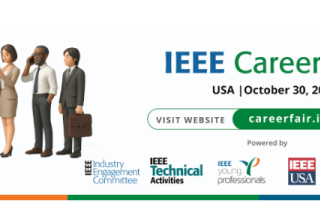Diversity Order Analysis for Quantized Constant Envelope Transmission
Top Reasons to Join SPS Today!
1. IEEE Signal Processing Magazine
2. Signal Processing Digital Library*
3. Inside Signal Processing Newsletter
4. SPS Resource Center
5. Career advancement & recognition
6. Discounts on conferences and publications
7. Professional networking
8. Communities for students, young professionals, and women
9. Volunteer opportunities
10. Coming soon! PDH/CEU credits
Click here to learn more.
Diversity Order Analysis for Quantized Constant Envelope Transmission
Quantized constant envelope (QCE) transmission is a popular and effective technique to reduce the hardware cost and improve the power efficiency of 5G and beyond systems equipped with large antenna arrays. It has been widely observed that the number of quantization levels has a substantial impact on the system performance. This paper aims to quantify the impact of the number of quantization levels on the system performance. Specifically, we consider a downlink single-user multiple-input-single-output (MISO) system with
Introduction
Large antenna array is a promising technology to achieve high data rate and high reliability of wireless communication systems [1], [2], [3]. However, the power consumption and hardware cost of the system also grow with the number of antennas, which is a major concern for the practical implementation of the large antenna array technology. To address such issues, it is necessary to employ low-cost and energy-efficient hardware components at the base station (BS). It is well known that the most power hungry components at the BS are the power amplifiers (PAs) [4]. To improve the efficiency of the PAs, transmit signals with low peak-to-average power ratios (PAPRs) are desirable. In particular, constant envelope (CE) transmission, where the transmit signals from each antenna are restricted to have the same amplitude, has attracted a lot of research interests as it facilitates the use of the most efficient and cheapest PAs. It has been shown in the pioneering works [5], [6] that with
SPS Social Media
- IEEE SPS Facebook Page https://www.facebook.com/ieeeSPS
- IEEE SPS X Page https://x.com/IEEEsps
- IEEE SPS Instagram Page https://www.instagram.com/ieeesps/?hl=en
- IEEE SPS LinkedIn Page https://www.linkedin.com/company/ieeesps/
- IEEE SPS YouTube Channel https://www.youtube.com/ieeeSPS












